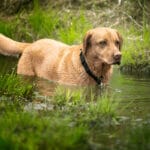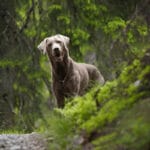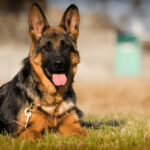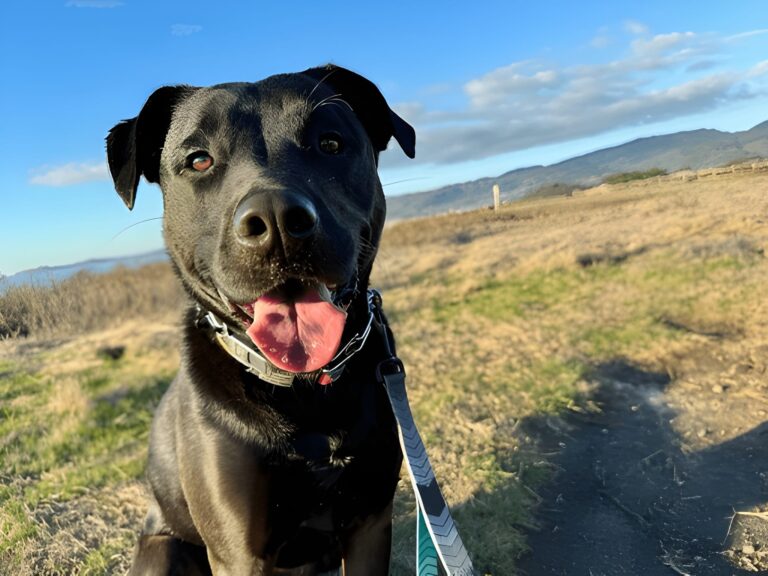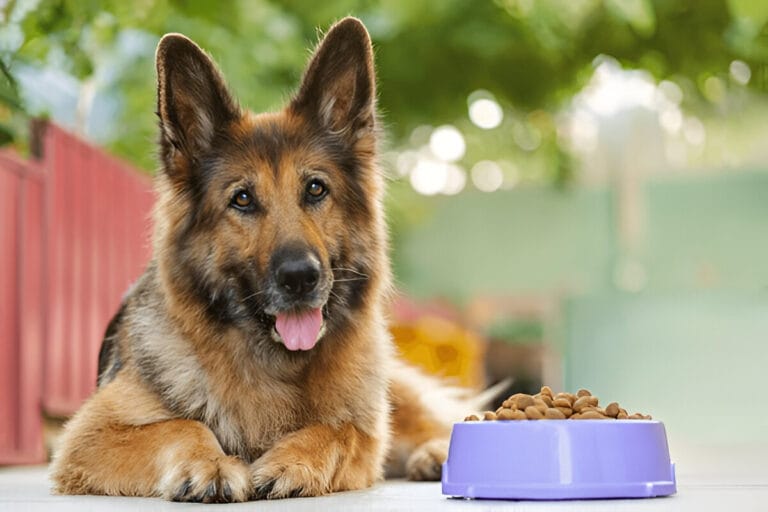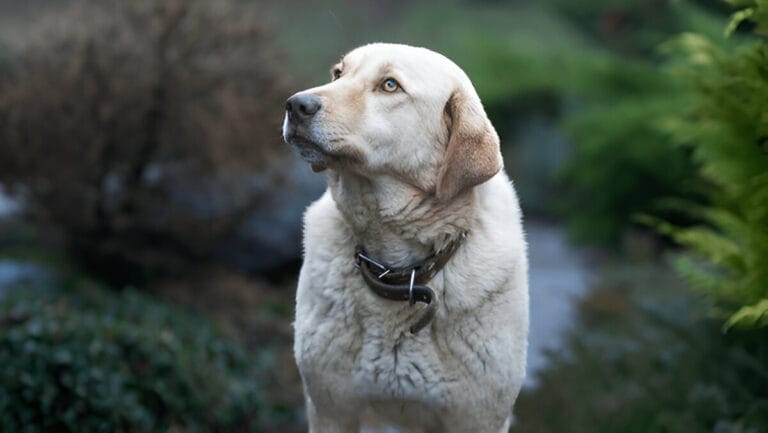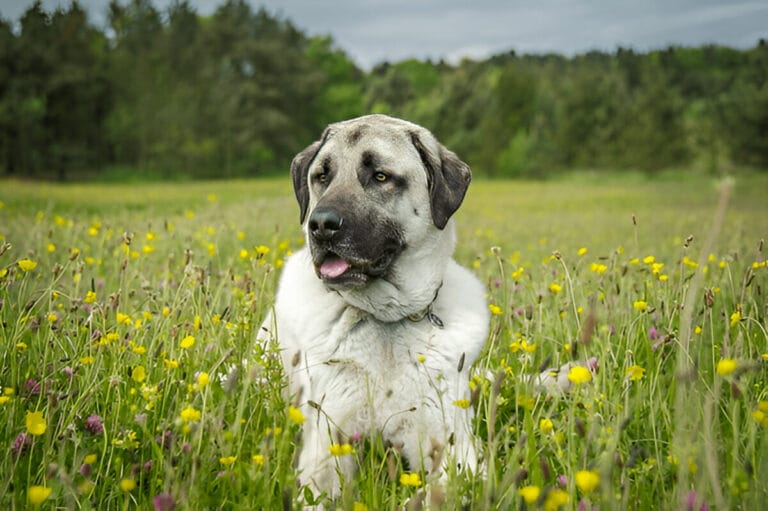Introduction
The Silver Sable German Shepherd stands as one of the most recognizable breeds in the world, though this stunning color variation might look different from what you’re used to seeing in traditional shepherds.
Having worked with these magnificent dogs for over a decade, I can tell you that despite their unique appearance, they share the same characteristics that have made German Shepherds known for being loyal to their master. These dogs were originally bred and used for working purposes, building an impressive career in military, police, and service roles that continue today.
When we talk about everything related to this breed, we must trace it back through history to find the first classic examples, as it’s believed that the original eager-to-work herding dog was the founding member of what would become this remarkable family.
What makes the silver sable truly special is that it boasts a beautiful double coat with a unique pattern that means individual hair strands contain multiple bands of colors including tan, red, brown, and black tips.
This rare variation differs from the more popular standard coloring because it changes constantly throughout their life, creating an almost shimmering effect that’s absolutely mesmerizing to witness.
Despite their reputation for having a vicious bite at the slightest provocation – which is largely unfounded – these are the best companions you could ask for. As a highly intelligent breed that’s easy to train, these fun-loving, people-oriented, sweet pups are guaranteed to put a smile on your face every day.
The fact that they closely resemble their working ancestors while maintaining such gentle temperaments makes them truly exceptional family dogs, and their dominant presence commands respect while their loving nature wins hearts.
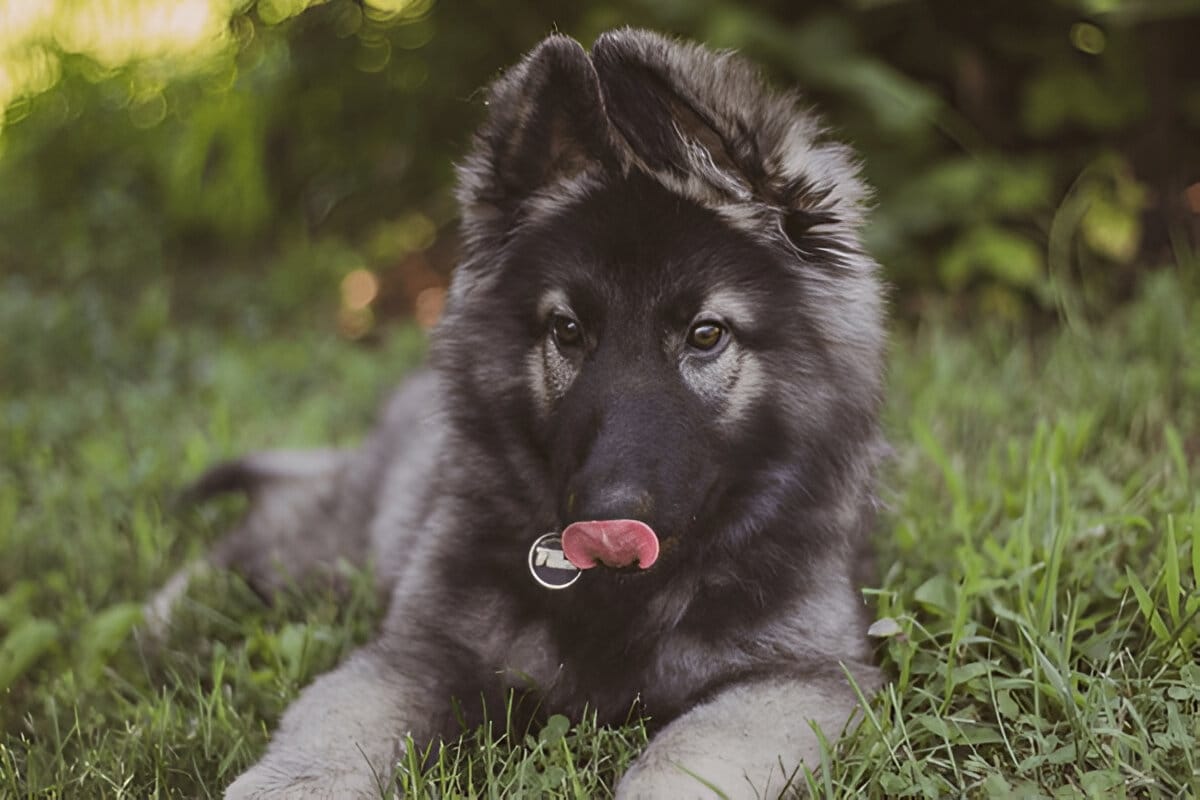
Photo credit: Shutterstock by Emily Boling
What Is A Silver Sable German Shepherd?
The Silver Sable German Shepherd is not always a dog that shimmers like you might expect – that’s just ridiculous thinking, as the term refers to the color pattern not the ott-tan shine, and when we talk about this unique variation, these tones vary from cream to off-white and light white that appears striking when you see it alongside the black and tan markings.
Origin Of Silver Sable German Shepherd
Before we start talking about Silver German Shepherds, you must know that a Sable Shepherd is the same as any other German Shepherd, which means there’s no difference in heritage – coat coloration has no impact on their temperament, well-being, or physical capabilities.
The story started when a cavalry officer named Max Von Stephanitz decided to buy a herding dog from Germany and spent 35 years of his life doing research and cross-breeding with a vision to design a new mixed breed with calm temperament that could serve as a loyal pet.
Experts suggest that the silver coloring stems from genetic changes that slowly worked their way into the breed line, and in 1899, Captain von Stephanitz started his endeavor to develop the ideal working dog through a dedicated breeding program that was meticulously crafted into what we see today.
Having studied these magnificent dogs extensively, I can tell you that silver sables share the same rich history while being unique in being the result of two recessive genes passed down from ancestors.
The probability of a puppy inheriting this trait is one in four if both parents are carriers of this dazzling coloration, and it can skip generations only to reappear in subsequent generations, preserving this uncommon and highly sought-after characteristic.
As they share the same origins, these dogs possess all the admirable qualities of more common counterparts, and despite not being distinct breeds, they’re simply a variation within the same lineage resulting from careful combination of genetics such that they meet all breed standards in working abilities and traits, making them just as versatile and capable as their relatives.
The genetic factor behind this enchanting coloration involves specific genes that play crucial roles in determining coat patterns in dogs -the RALY and A locus are responsible for the saddle pattern seen in black and tan varieties like those found in Lakeland Terrier breeds, while the silver sable’s mesmerizing appearance comes from different genetic markers.
Understanding the role of these genes helps breeders selectively breed for this trait, contributing to the continued presence of this eye-catching variation in the German Shepherd family tree.
Characteristics Of Silver Sable German Shepherd
The Silver Sable German Shepherd is not a mixed breed but results from a gene mutation in the ordinal genetics, and in General this means these dogs carry the same characteristics and temperament as standard German Shepherds though they’re rarer than other color variations, hence they are more expensive when you find puppies in a litter.
From my experience breeding these magnificent dogs, the size of pups will be around 6-9 per litter, and for purchasing one you can expect to pay anywhere from $300-800 but some premium bloodlines might have prices ranging $800-$1500 depending on the breeder’s reputation and the dog’s lineage.
1. Appearance
Already mentioned, the only difference you will find between a regular German Shepherd and a Silver Sable is the color of their coat, as they are large breed dogs where male dogs weigh almost 90 pounds and stand up to 26 inches tall, while on the other hand female dogs are slightly smaller at around 75 pounds standing 24 inches tall.
These magnificent dogs have dome-shaped heads with square muzzle, erect ears, long necks, and strong builds, and it’s often said that their ancestors must have been wolves based on their striking features.
The most defining feature of this variety is of course their unique coloration – their coats are primarily a rich charcoal hue with black tips on the fur giving a stunning silver effect, and no two dogs are exactly alike due to variations in shading that create a regal appearance combined with their noble stance makes them truly beautiful dogs.
They typically have dark masks covering facial features with eyes that are brown though lighter shades can occur, and overall they closely resemble the classic black and tan German Shepherd in body structure and proportions.
2. Coat
German Shepherds usually have two-layer coats where the outer coat is dense and protects the inner layer which in comparison is soft and helps them keep warm, and these dogs are known for their heavy shed – hence if you are allergic to such things, a Silver Sable Shepherd might not be the right pet for you.
3. Color
The sable color pattern in Silver German Shepherd means that almost every hair on the dog will have a black tip even on the silver fur, and these dogs have a lifespan of 10 to 14 years on average – however, if you take good care of them they might survive for an additional 2-3 years to get extra life, but you need to ensure they are on proper diet and follow a regular exercise routine.

Photo credit: Shutterstock by Eudyptula
Silver Sable German Shepherd Temperament
Silver German Shepherds have a good reputation for being intelligent, loyal, and enthusiastic about their work and exercise, as they are one of the largest and most courageous dogs you’ll find.
The Sable Shepherd is naturally friendly and can create strong bonds quickly, but do not expect them to befriend every person they meet – around children they take a guardian role when there are no adults present, so make sure to establish boundaries with family members, and if your dog doesn’t want to interact with others, give them space and respect their decision.
It’s worth emphasizing that the silver coat coloration has no impact on their behavior or character qualities, since these dogs possess identical traits to other German Shepherds such as intelligence, loyalty, bravery, and family-oriented nature.
In general, they’re known to be aloof yet not aggressive, reserved but not unfriendly, easy-going and approachable with their families while remaining strong and protective when threatened – gentle and loving toward human companions where some may bond more closely with one person while others shower the whole family with affection.
These make excellent companions and guard pets regardless of their unique coloring, so when considering a potential addition to your home, it’s essential to remember that coat color is simply a variation and plays no part in determining their temperament – the true value lies in what’s making them a cherished breed among dog enthusiasts worldwide.
Health Concerns
Unlike other breed variations where coat color might affect health, the Silver Sable German Shepherd has no relation between its coloring to its health, so to find out the concerns of this variety we can see the whole German Shepherd family as one unit since unfortunately this breed is prone to a range of genetic conditions.
Therefore, you must work closely with a veteran to monitor any medical condition in your dog, and here are a few common problems that your dog might face – all Shepherds can be susceptible to certain issues regardless of their coat color, and some of these include hip dysplasia, elbow dysplasia, and osteochondritis dissecans.
It’s important to be aware of these potential health risks and take preventative measures to ensure your dog remains healthy throughout its life.
One effective way to reduce the chances of puppies developing these conditions is ensuring both parents have high health scores for their hips and elbows – responsible breeding practices help minimize the risk and contribute to the overall wellbeing of the breed.
Additionally, feeding your puppy a high-quality, low-calorie diet can prevent rapid growth that leads to bone disorders, while regular vet check-ups and proper care are essential for maintaining optimal health. By addressing any issues early on and following your veterinarian’s recommendations, you can lead your silver sable to a happy and healthy life.
Degenerative Myelopathy:
Degenerative Myelopathy is a progressive neurological disease that affects the spinal cord and it generally happens in the German Shepherd family, hence this condition can be due to hereditary factors but the exact reason is yet to be fully proven by veterinary science.
Bloat:
Bloat is the common medical name for gastric dilation in dogs, and this condition usually happens when the dog is on an unbalanced diet – the stomach bloats and swells the insides of the abdomen and puts dangerous pressure on vital organs.
Epilepsy:
Epilepsy is one of the major health concerns in Silver Sable German Shepherd dogs, and this neurological issue is generally related to heredity factors passed down through bloodlines.
Panosteitis:
Panosteitis is a condition where the Silver Sable German Shepherd experiences abnormal growth of bones, and this bone disorder usually happens in large breed dogs where symptoms can be found between 4-14 months of age.
Malabsorption:
This digestive condition is especially exclusive to the German Shepherd breed as it is a non-curable but treatable disorder in which the pancreas does not secrete enough digestive enzymes to properly absorb nutrients, and this seriously affects the life expectancy of the dog if left untreated.
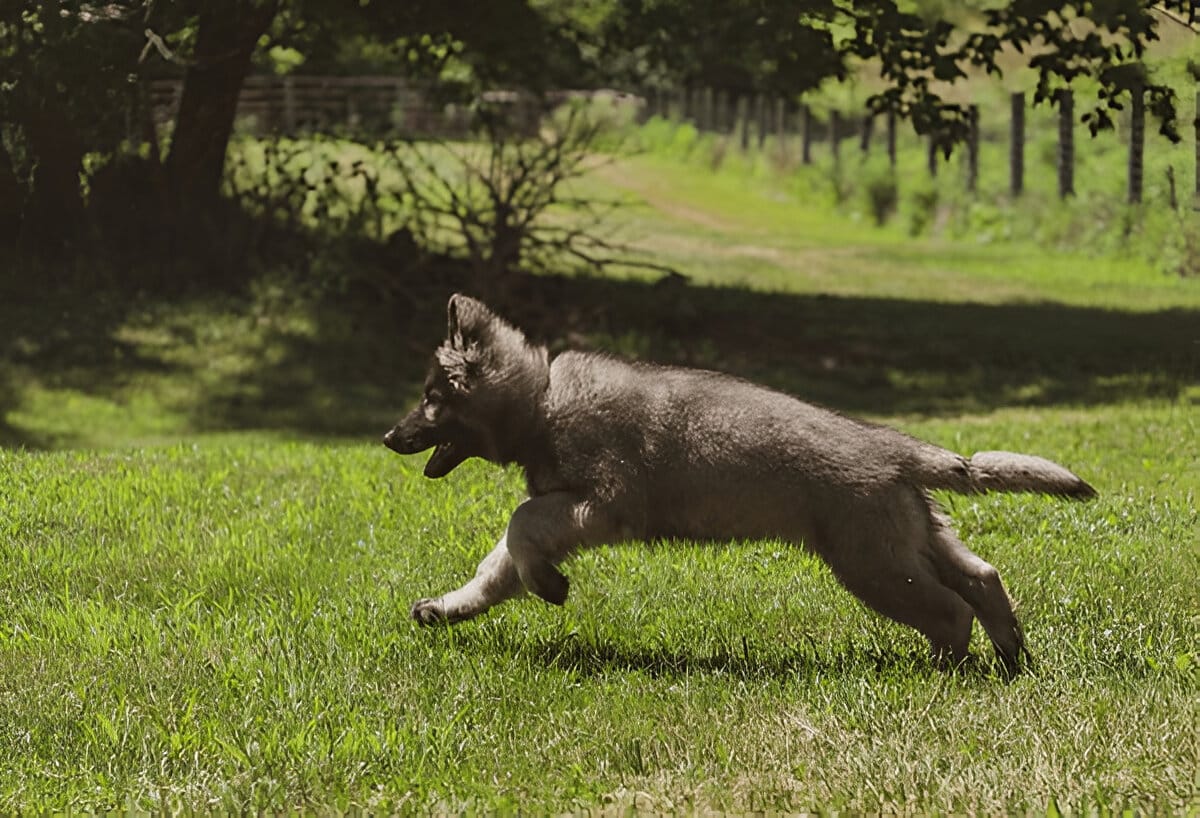
Photo credit: Shutterstock by Emily Boling
How To Care For A Silver Sable German Shepherd?
If you are a Silver Sable German Shepherd owner you must be proactive with what you do for these dogs since they’re quite active by nature and they need at least 60 minutes of daily exercise, and apart from this there is proper diet and regular grooming that you must look after to keep them healthy.
1. Food & Diet
Like any other dog, German Shepherds need a lot of nutrients, so while you are picking out food for your Silver Shepherd it’s important to go with the foods that are full of quality ingredients because these are active and agile dogs – they require sufficient calories in their diet to keep them energized, strong, and healthy.
For both puppies and adults, protein is the major nutrient for growing and maintaining muscle mass, where puppies need at least 22% protein content while adults require 18% minimum protein in their daily food intake to support their active lifestyle and maintain optimal health.
2. Exercise
German Shepherds are an active breed they belong to a lineage that is often used in military, police force, or as guards, hence it is not surprising they have high exercise requirements – you need to ensure your Silver Shepherd exercises at least 60 minutes to 90 minutes daily, and if you keep them away from adequate physical exercise they could exhibit harmful habits caused by restlessness and accumulated energy.
From my experience training these magnificent dogs, I’ve learned that consistent daily exercise not only keeps them physically fit but also mentally stimulated, which is crucial for preventing behavioral issues and maintaining their overall wellbeing.
3. Cleaning & Grooming
All German Shepherds have double coats where the outer layers are thick and protect the inner coat which in comparison is soft and keeps the dog warm – this is why they do not need to bathe regularly as once every three months will be enough for maintaining their coat’s natural oils and cleanliness.
Furthermore, you must ensure you clean their teeth regularly to avoid any gum problems, but if this sounds like too much hassle for you, just give them quality chewing toys that naturally promote dental cleanliness and maintain healthy gums.
From my years of experience with these beautiful dogs, I’ve found that regular brushing two to three times per week is essential to manage their shedding and keep their stunning silver sable coat looking its best.
conclusion
Purebred Silver Sable German Shepherds truly wrap up everything you could want in a companion – these incredible dogs serve as both loving pets and formidable guard dogs with excellent protection instincts for their human family and friends.
Their ferociously loyal nature makes them the best choice for adoption, whether you’re planning to adopt one of these amazing babies or simply exploring your options-it’s absolutely GREAT to share your experiences and thoughts with fellow enthusiasts. Plus, now that you understand what these remarkable dogs are offering, feel free to consider how each shepherd we’ve mentioned becomes not just a pet, but truly the most rewarding part of any household.


